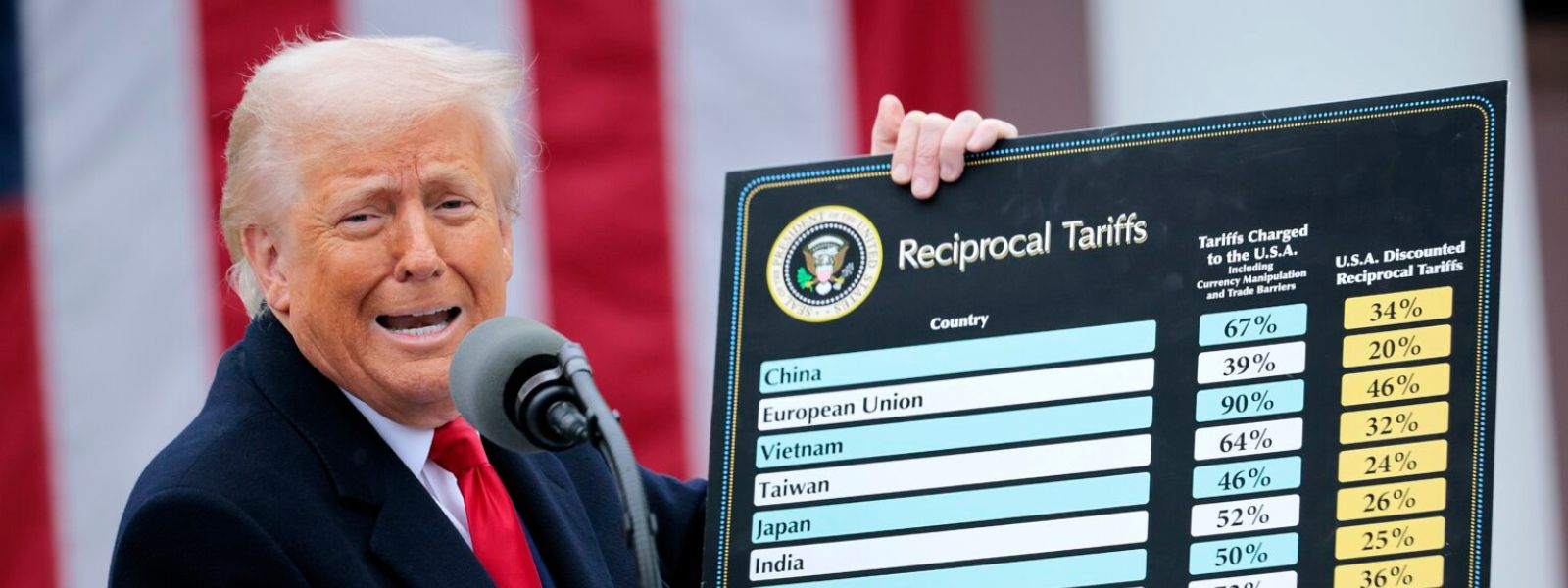.webp)

Sri Lanka Among Nations Hit by Trump's Aggressive Tariff Strategy
COLOMBO (News 1st); In a move to address trade imbalances, US President Donald Trump announced the imposition of sweeping tariffs on some of the country's largest trading partners.
The new tariffs include a 10% universal tariff on all imported foreign goods, effective April 5th, and "reciprocal tariffs" ranging from 20% to over 40% on dozens of countries, starting April 9th.
During an address to automotive industry professionals in the Rose Garden on April 2nd, President Trump emphasized the need to rectify what he described as unfair trade advantages held by other countries. "Other countries gain significant advantages in trade deals with the United States. To immediately address this imbalance, we are implementing a new policy of reciprocal tariffs to ensure that the US economy benefits more from these trade relationships," Trump stated.
The President's decision fulfills a key campaign promise to raise US taxes on foreign goods, aiming to narrow the gap with the tariffs that the White House claims other countries unfairly impose on US products.
The full text of the executive order has been published on the official White House website.
According to the order, a 10% tariff will be imposed on all goods imported into the United States starting April 5th. Additionally, the increased reciprocal tariffs will be implemented from April 9th.
President Trump highlighted that Sri Lanka imposes an 88% tariff on goods imported from the United States. In response, the new executive decision stipulates that the United States will impose a 44% tariff on goods imported from Sri Lanka.
Dhananath Fernando, CEO of the Advocata Institute, explained the rationale behind the reciprocal tariff.
"The reciprocal tariff has been calculated based on the trade balance between Sri Lanka and the US. President Trump mentioned that if someone imposes a tariff on US products, the US will charge the same or half of it in this case against the other country," Fernando stated.
The highest tariffs have been imposed on China, with a rate of 34%. Other key trading partners affected include:
- European Union: 20%
- Israel: 17%
- India: 26%
- Bangladesh: 37%
- Myanmar: 44%
- Indonesia: 32%
- Laos: 48%
- Thailand: 36%
- Cambodia: 49%
- Madagascar: 47%
In 2024, 23% of Sri Lanka's total exports were to the United States, with 70% of these exports being apparel. The total revenue from exports to the US amounted to USD 3 billion, with over USD 2 billion coming from apparel. While the maximum tariff is set at 44%, the rates may vary for different products. Similar tariffs have been imposed on other countries competing with Sri Lanka in the apparel industry.
President Anura Kumara Dissanayake has appointed a committee to study the potential challenges arising from the tariffs and provide recommendations to the government.
The committee includes key officials from the Ministry of Finance, Central Bank, Board of Investment, Export Development Board, and Ministry of Foreign Affairs. Diplomatic discussions have also been initiated to mitigate the challenges posed by the new tariffs.
Other Articles
Featured News





.png )





-786456_550x300.jpg)


-785316_550x300.jpg)



















.gif)